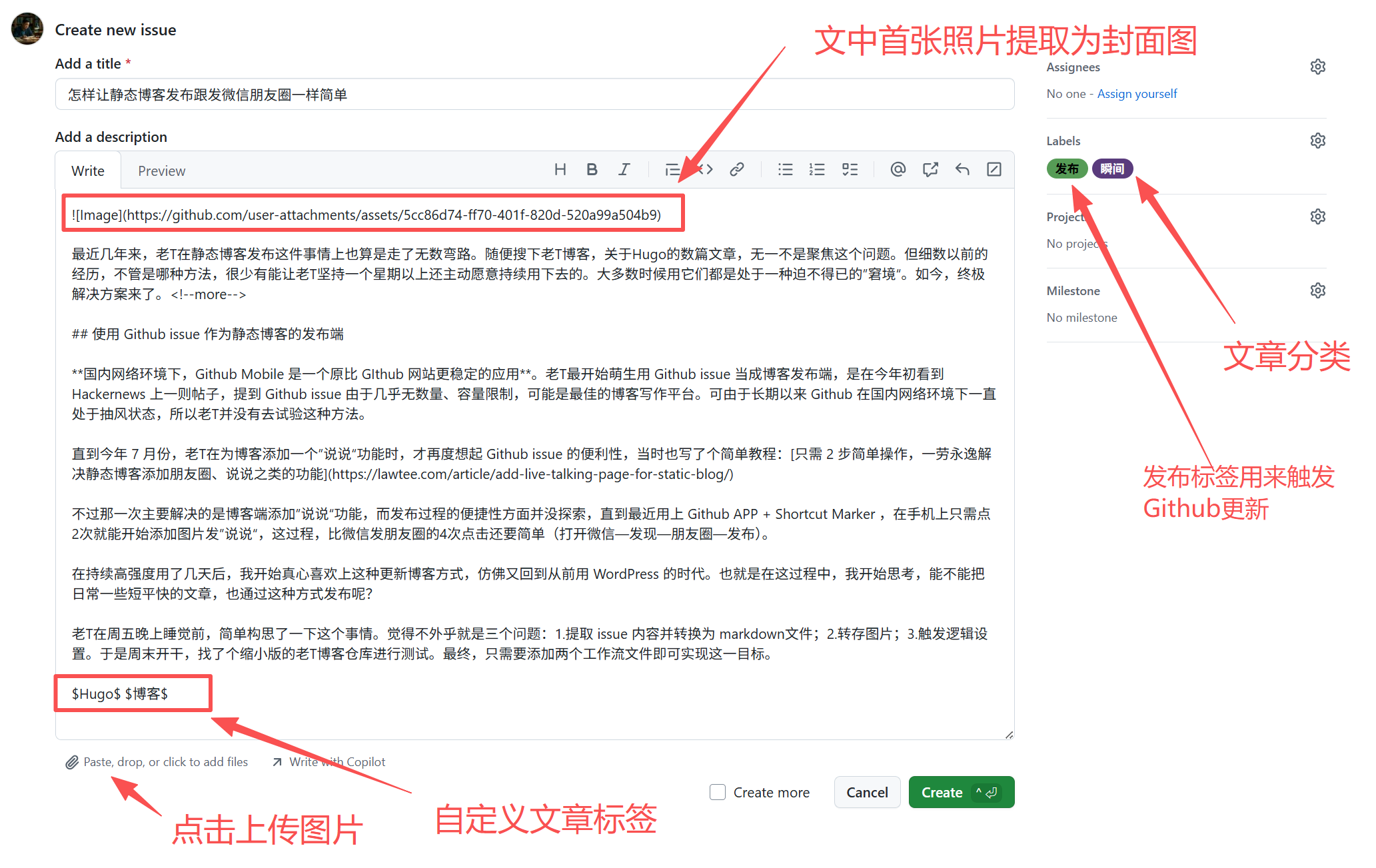Over the past few years, Old T has taken countless detours when it comes to publishing on a static blog. A quick search through Old T’s blog reveals several articles about Hugo, all focusing on this very issue. But looking back at past experiences, no matter which method was tried, few lasted more than a week with Old T willingly continuing to use them. Most of the time, using them felt like being stuck in an unavoidable “predicament.” Now, the ultimate solution has arrived.
Using GitHub Issues as the Publishing Platform for a Static Blog
In domestic network environments, GitHub Mobile is a far more stable application than the GitHub website. The idea of using GitHub Issues as a blog publishing platform first occurred to Old T earlier this year when they saw a post on Hackernews mentioning that GitHub Issues, with its almost unlimited quantity and capacity, might be the best platform for blogging. However, due to GitHub’s long-standing instability in domestic network environments, Old T didn’t test this method.
It wasn’t until July of this year, while adding a “Moments” feature to the blog, that Old T once again recognized the convenience of GitHub Issues. At the time, they also wrote a simple tutorial: Just 2 Simple Steps to Permanently Add a Moments or Live-Talking Page to Your Static Blog
However, that time was mainly about adding the “Moments” feature to the blog, and the convenience of the publishing process wasn’t explored. It wasn’t until recently, when using the GitHub APP + Shortcut Marker, that Old T could start adding images and posting “Moments” with just two taps on the phone. This process is even simpler than the four taps required to post on WeChat Moments (open WeChat → Discover → Moments → Post).
After using this method intensively for a few days, Old T genuinely started to enjoy this way of updating the blog, almost feeling like they were back in the days of using WordPress. It was during this process that Old T began to wonder: Could everyday, short-and-sweet articles also be published this way?
Before going to bed on Friday night, Old T briefly thought about this and concluded it boiled down to three issues: 1. Extracting the content of the issue and converting it to a Markdown file; 2. Saving images; 3. Setting up trigger logic. So, over the weekend, Old T got to work, testing it on a scaled-down version of the Old T blog repository. In the end, only two workflow files needed to be added to achieve this goal.

Detailed tutorial: How to Use GitHub Issues to Publish Hugo Blog Posts
